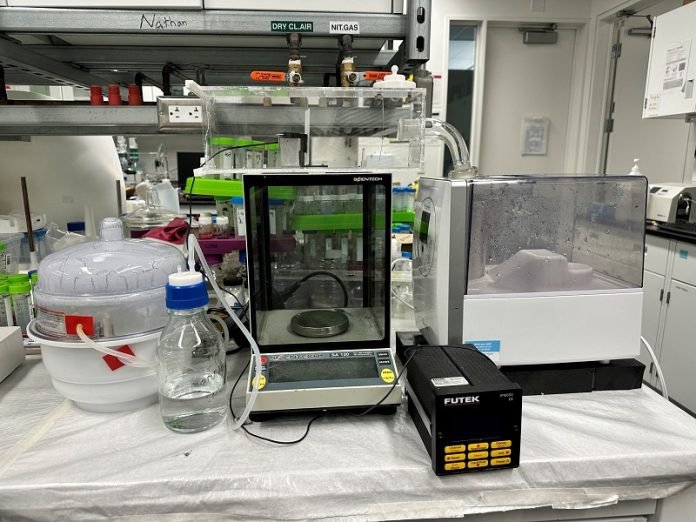
Imagine if you could pull a glass of fresh water straight from the air!
A group of researchers at the University of Waterloo, led by Professor Michael Tam, are trying to make this a reality.
They’re studying how nature collects water so we can do the same thing, especially when water is hard to find.
This could be a game-changer as the world faces a shortage of clean drinking water.
Professor Tam is like a detective of nature, always looking for clues. One day, he noticed that spider webs can collect water droplets from the air.
The spider doesn’t have to go down to the river for a drink; its web does the work for it! Tam thought, “What if we could do something similar?”
Then he learned about the Namib desert beetle. This clever little bug lives in a place where water is super scarce. So how does it stay hydrated?
It has a unique armor-like skin that catches tiny water droplets from fog when it leans into the wind. The droplets collect and become big enough for the beetle to drink.
So, Professor Tam and his students, Yi Wang and Weinan Zhao, started to invent new materials that work just like spider webs and beetle skin.
They created sponges and membranes with lots of surface area to capture water from the air. But it’s not just about catching the water; these materials also help purify it.
One technology they’re working on is called “atmospheric water harvesting.” To mimic the beetle’s special skin, the team is using plant-based materials like a wax emulsion stabilized with cellulose.
This surface can attract tiny water droplets and quickly let go of bigger ones, just like the beetle does.
And that’s not all! They’ve also made paper that’s not just water-resistant but super water-repellent. Imagine if an accidental spill didn’t ruin your important papers anymore!
This is a result of their experiments with “superhydrophobic” surfaces, which really means surfaces that hate water so much they push it away.
Another thing they’re looking into is how to make their inventions bigger and more useful.
They’re also exploring how to use solar energy to turn collected water vapor back into liquid water, inspired by the way mushrooms are shaped to maximize sun exposure.
Why is all of this so cool? Well, their work could help us get fresh water in places where it’s hard to find.
Imagine being able to collect and purify water from the air in desert areas or during droughts! And the best part? The materials they’re using are environmentally friendly and help fight climate change.
In a world where clean water is becoming rare, these scientists are looking to spiders and beetles for solutions. They’ve shared their exciting work in a scientific journal and are eager to take the next steps.
So the next time you see a spider web glistening with dew in the morning, remember: it’s not just beautiful, it’s also a tiny piece of a big puzzle that could help us all.
The study was published in the journal Nature Water.
Follow us on Twitter for more articles about this topic.



